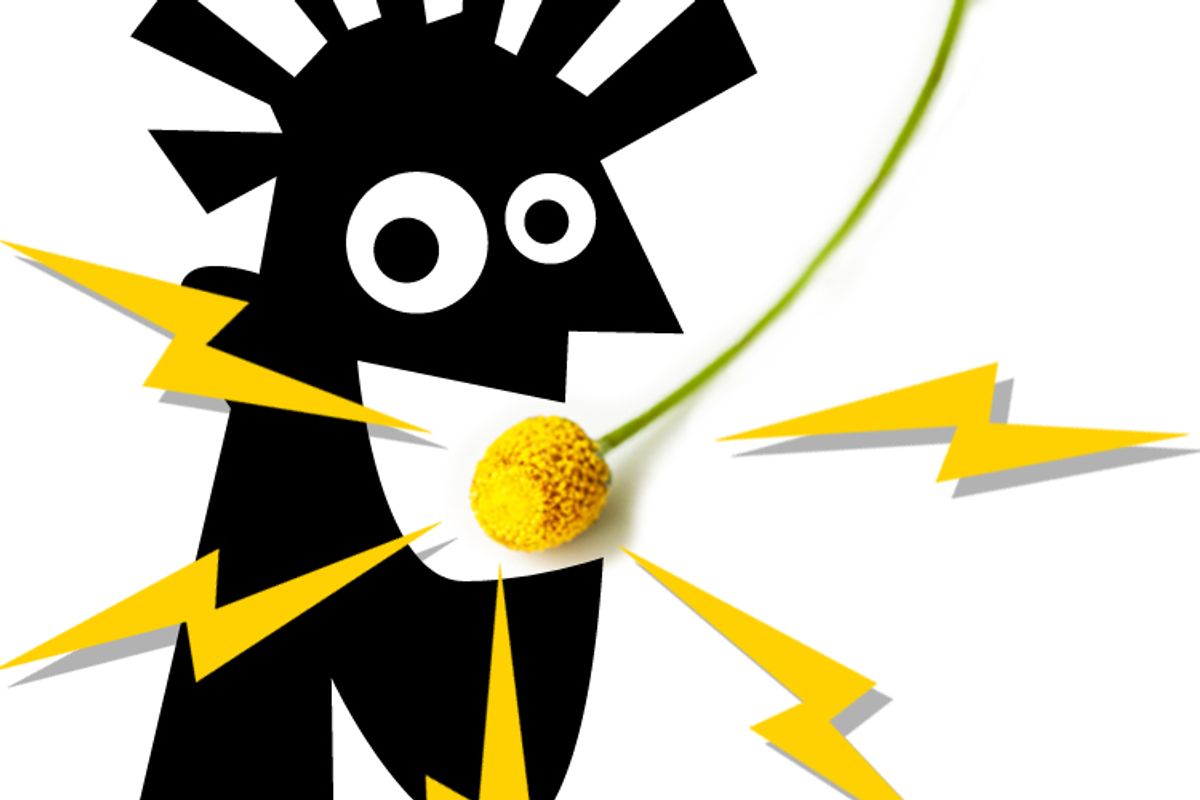What is it?
The Sichuan button is a small, yellow flower bud that, when eaten, creates a strong tingling sensation in the mouth -- not unlike biting down on an iPhone -- and a sudden increase in salivation. The active ingredient is spilanthol, a chemical that’s used in food manufacturing and candies (to counteract astringents, which dry out the mouth, and to create the sensation of "freshness"). The full Sichuan button experience comes in three stages: first, a grassy taste, followed by a tingling and numbing sensation, then salivation, and, finally a fresh, clean finish. (It's usually broken up into smaller pieces in cooking.)
Clearly, having something feel like it’s electrocuting your mouth is the highlight of Sichuan button consumption, and, as one blogger described it, "the closest that anybody could compare was putting a 9V battery on your tongue." The Washington Post has more demurely called its taste a "mix of Altoids and Tellicherry."
Where does it come from?
The button comes from the acmella oleracea plant (also known as para cress or, more adorably, the "toothache plant"). It’s long been used for flavoring and health reasons in South America, Africa and Asia. Indian manufacturers use the buttons to flavor chewing tobacco, for example, while others use its numbing qualities to help relieve toothaches and stomach ailments, and some believe it can help treat blood parasites. (The bud is unrelated to the Sichuan peppercorn, which was long banned in the U.S.)
Koppert Cress, a Dutch micro-vegetable company, helped pitch the button to American high-end restaurants when it opened its first American greenhouse in 2006. In the past two years it’s been gaining buzz among chefs and mixologists, who use it to create a carbonation-like effect in cocktails (especially those with a citrus flavor), and add snap to sauces, ice cream or even chocolates. It also works as a palate cleanser between meals. It's since popped up on NPR and in the Culinary Institute of America alumni magazine (along with the Washington Post).
Who’s eating it?
The appeal of the buttons (mostly because they're very hard to find in the U.S.) remains largely confined to high-end chefs. In 2006, chef Jeff Ramsey used the buttons in his winning entry into the Seven Sushi Samurai contest. Among restaurants that have caught button fever: The East Coast Haru Japanese restaurant group (which has used it in cocktails), Poste in Washington, D.C. (which has used it in a halibut sauce), and Ferran Adrià’s El Bulli restaurant in Spain (which serves Sichuan button-infused milk). Marc Forgione, the chef at Tribeca’s creatively named Marc Forgione (formerly Forge), has even posted a Facebook video showing his love for the buttons.
Longevity ranking: 7 (out of 10)
Once their party-trick novelty has worn off, Sichuan buttons will probably lose their appeal -- but given that they’ve yet to trickle down to American grocery stores, much less home kitchens, that’s probably a long way off.

Shares